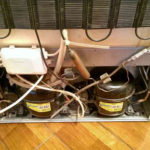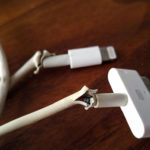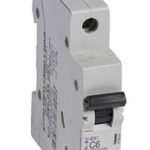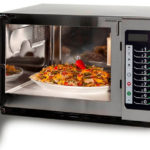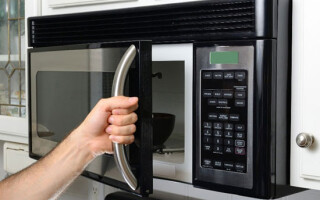Sometimes microwave works, but the dish set to bask remains cold. The reasons why the microwave does not heat up can be both complex and require contacting a repair specialist, and easily fixed.
Content
Why Problems Might Occur
The main reasons why the microwave has stopped heating may be as follows:
- The voltage in the network has dropped. Sometimes there are power outages, and the voltage drops by 20 V. In such cases, the dishes heat up only at the edges, and the food remains cold.
- Network overload. 2 high power devices are connected to the same power source at the same time. This may adversely affect the work of one of them.
- Wrong mode set. Most often, this is the “defrost” mode, in which the food does not warm up to the end.
- The door is faulty. Perhaps the cause is a broken latch.
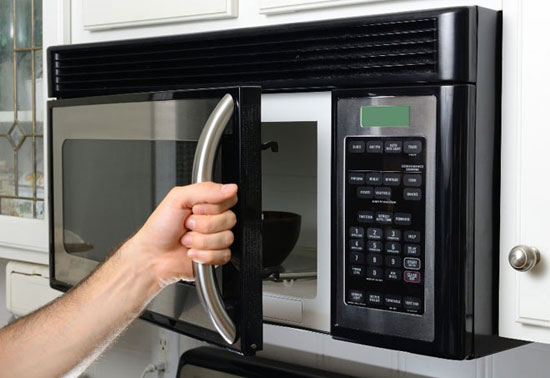
These are the simplest options that do not require repair.But there are more significant reasons why the microwave does not heat well:
- damaged timer or control unit;
- burned out transformerhigh voltage, light) fuse;
- failure of an electromagnetic lamp, or magnetron;
- broken capacitor;
- the multiplier, consisting of 2 interdependent parts, a high-voltage diode and a condensate, failed.
It is difficult for a non-professional to determine which of the parts needs to be replaced. To understand what the problem is, you need to know about possible malfunctions.
Main malfunctions
If the microwave does not heat well, buzzes or makes other strange sounds, then the elements inside are damaged. You can also find and correct the cause yourself if you know the main signs of damage to one or another element of the microwave oven. First of all, you need to unplug the microwave oven from the mains and carefully study the instructions for it. The manual should contain a diagram of the device device, where all the main elements are indicated.
Fuse
First of all, you need to unscrew the back cover. Fuse is a metal thread enclosed in a glass or ceramic tube. There are several of them in microwaves - most often 2.
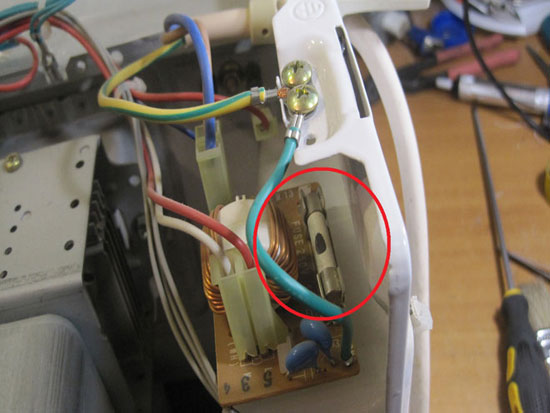
You need to see if the fuses are good or not. Faulty ones are immediately noticeable: they swell or turn black, the thread bends. If there is nothing suspicious in appearance, then a resistance check should be done. To measure, you need an ohmmeter.
The fuse must be replaced with a new one. In order not to make a mistake when buying, you need to take the old sample with you.It is undesirable to try to solve the problem in some other way - the probability of a fire with a damaged fuse is quite high
Capacitor
One of the most common reasons food doesn't heat up too quickly is a faulty capacitor. This breakdown is the cause of the noise and buzz of the microwave. For checking the condition of the capacitor you need an ohmmeter. First you need to wait until the capacitor is completely discharged. What the measurement results show:
- resistance is weak - it means that the part is faulty;
- the arrow of the measuring device does not move from its place - there are no container contacts;
- if the arrow froze at the “∞” sign or slightly deviated from this mark, then the capacitor is working.
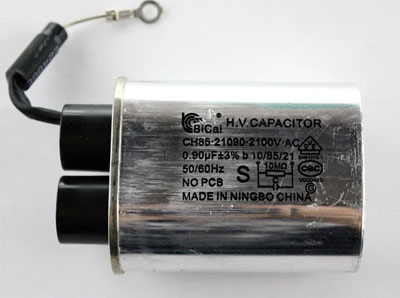
A defective capacitor must be replaced.
high voltage diode
It is not easy to install a diode malfunction at home due to the complexity of the resistance measurement procedure. You can verify the malfunction using a high-voltage capacitor, which is connected to the diode. If the condensate remains cold, then the diode is faulty. Another indicator of failure is blown fuse. A strong hum when turned on and while the microwave oven heats up food also indicates a diode malfunction. The element needs to be replaced.

Magnetron
The purpose of the magnetron is to generate a high-frequency electric field, due to which the products inside the chamber are heated. The EM lamp feed-through capacitors may be damaged. To verify this, you need to open the housing of the electromagnetic lamp. Then you need to measure the voltage in the transformer. Any deviation from the 220 V mark indicates a malfunction. The broken element must be replaced.
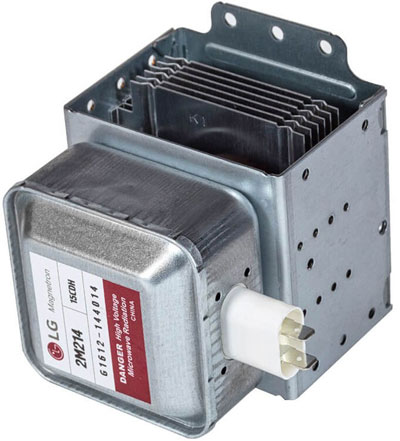
Magnetron failure - this is the most common reason why the microwave does not heat up. You can recognize the breakdown of the magnetron by a strong hum and noise during the operation of the microwave. There are no signs of burnout (the lamp glows inside, no sparks). Then you need to open the case and conduct a visual inspection of the magnetron. If there is no visible damage and a specific smell, then you need to use an ohmmeter. If the magnetron is burned out, then you need to buy a new one, exactly the same as the old one.
What to do if the microwave does not heat
Actions depend on why the microwave oven works but does not heat. If these are external reasons (e.g. voltage fluctuations, socket failure), then eliminating them is extremely simple. First of all, you need to unplug the microwave from the mains. Then you need to turn off another powerful device if it is connected to the same power source.
If this is not possible - for example, a refrigerator is plugged into the same outlet - then you need to find a new place for the microwave oven and plug it into another outlet. You also need to do it if the serviceability of the outlet is suspicious (smoke, crackling, smell, traces of burning on the plastic case).
If the microwave does not heat due to the fact that the wrong mode is set, you should switch it and try to heat the food again. If the cause is related to the door, you need to carefully inspect the latches. Perhaps they are broken and need to be replaced with new ones. If everything is in order with the latches, it is enough to slam the door tighter (but do not use force, otherwise you can break the latch mechanism or even the door itself).
If the microwave works, but does not heat, the reason is most often a malfunction of the parts. When the microwave function is disturbed, the causes must be identified as soon as possible in order to avoid a fire. Signs of damage - noise, hum, crackling during operation, turning off the lamp, lamp.
You can diagnose yourself. To do this, turn off the furnace and wait until it is completely discharged. Then, having studied the instructions, it is necessary to open the case and conduct a thorough inspection of the details. It is worth measuring the voltage with an ohmmeter. If something breaks, it is necessary to remove the defective part and replace it with a new one.
Sometimes the oven may turn on and off on its own during operation. This often indicates that the problem is a fan malfunction: or a broken relay, or the ventilation holes are clogged. If the ventilation system fails, it is imperative to replace the fan with a new one. If this is not done, the oven will begin to overheat, dust will penetrate into the inside of the appliance. Blockages are possible, the probability of a complete failure of the device is high, there is a high risk of fire.
If, after replacing the damaged element, the microwave oven still does not work, then the help of professionals is needed. Without special skills, it is unsafe to carry out complex microwave repairs on your own; only a master can do this.
Similar articles:
